Scotland-based Deviate’s all-new Highlander II high-pivot mountain bike combines elements of the previous 140 and 150 models into a single trail bike.
Offering a bump-eating 145mm of rearward axle path suspension travel, and running on 29in wheels front and rear, the Highlander II is designed to tackle everything from epic days in the saddle to laps at your local bike park.
While it doesn’t excel at any specific riding niche, the new Highlander is comfortable and proficient on pretty much all types of terrain. While the phrase 'a jack of all trades is a master of none' can be construed as a criticism, it highlights the adaptability of the Highlander II.
On uphill and flatter sections of trail, the rear suspension remains relatively unaffected by rider pedalling inputs, resisting bob and giving it an efficient feel.
The high-pivot suspension eats up bumps – especially when set softer – providing a smooth, comfortable and calm way to pass hours in the saddle.

As long as the downhills aren’t super-steep or fast, the Highlander II is fun and engaging. The rear end delivers on the high-pivot promise by providing impressive control and stability, essentially extending the bike’s capabilities beyond its trail bike moniker.
Although its geometry provides a balanced riding position, once you push harder, some flaws become clear. At 65 degrees, the head angle could be slacker; dive into a fast, steep turn and the front wheel requires strength and control to keep it in check.
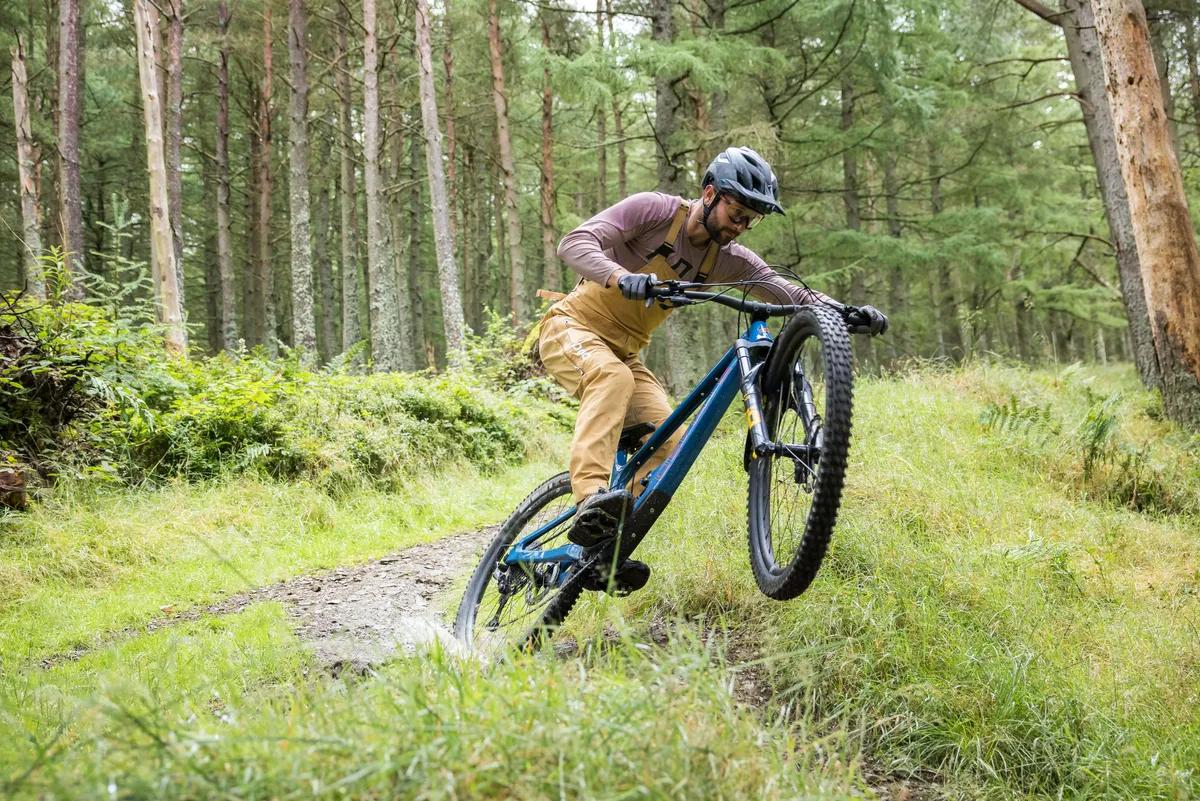
It’s the same on straighter, rougher sections of trail – let your guard down and the steering becomes lighter and twitchier than slacker bikes.
Of course, pushing the limits of any 145mm-travel trail bike will shine a light on similar weaknesses, but Deviate could have gone slacker while keeping the rest of the bike’s shape the same or virtually identical without any discernible compromises.
Available as a frame only, or with an Öhlins TTX2 Air shock, it retails for £3,270. Deviate says full builds – nearly identical to the one on test here – will be available soon and will retail for around £7,050.
Deviate Highlander II frame and suspension
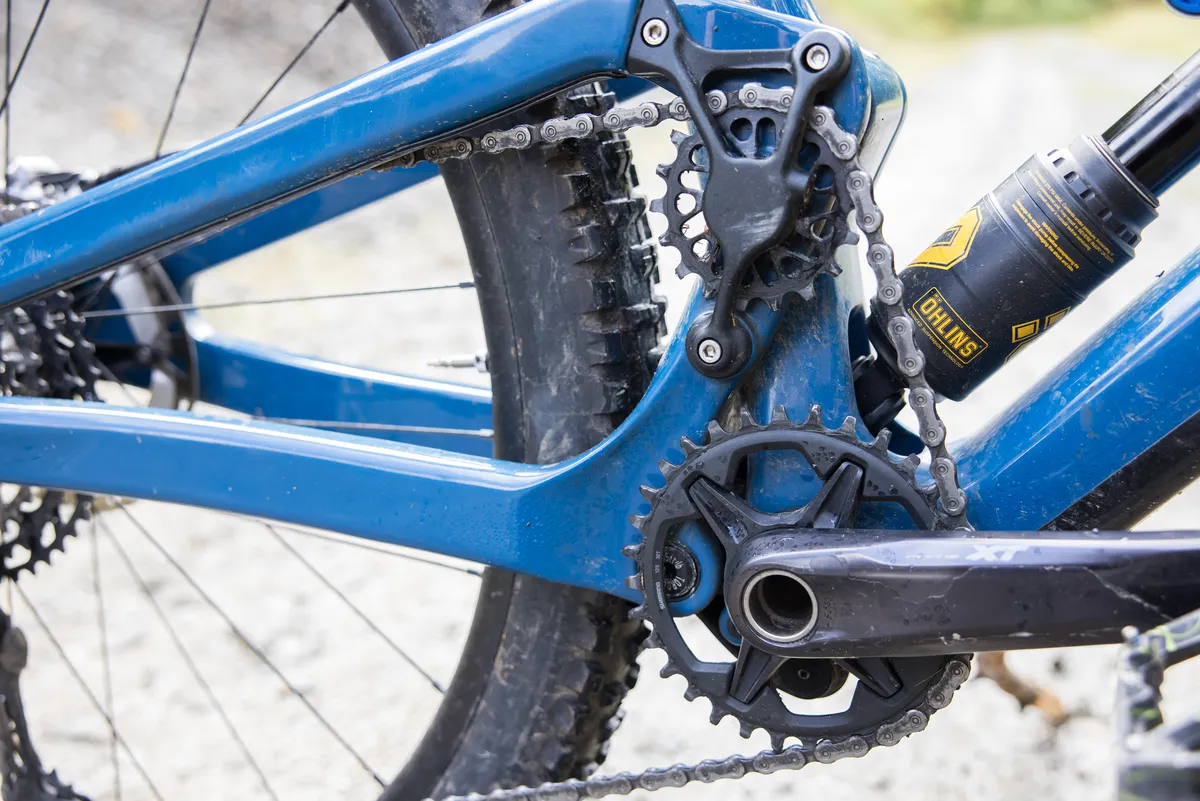
Built entirely from carbon fibre, the Highlander II’s frame has sleek, smooth tubes with no harsh, angulated joins.
In a bold move against a backdrop of widespread headset cable routing, the Highlander’s cables track externally on the underside of the top tube – bar the dropper post that enters a port on the head tube’s driveside – and then go through the swingarm’s chainstays.
The single, high-pivot suspension uses a linkage passing through a cut-out in the seat tube to drive the low-slung rear shock.
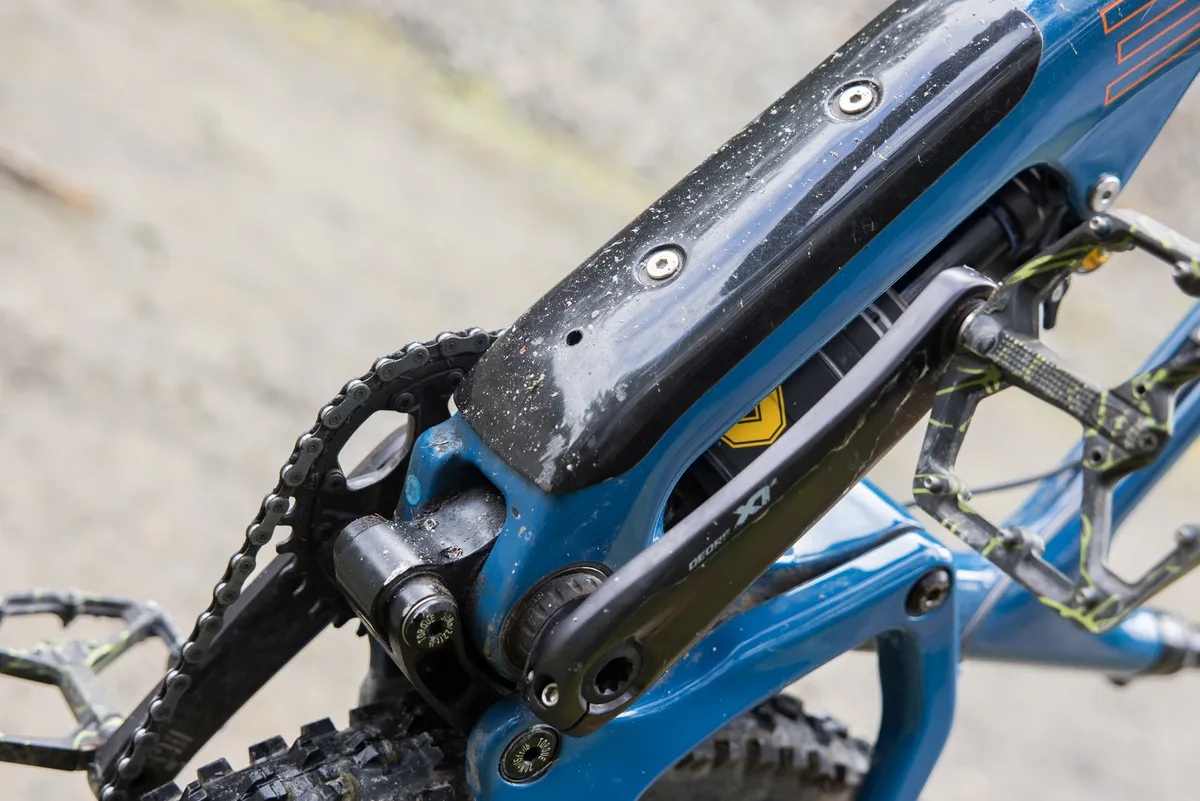
Its high-pivot design means the rear wheel arcs rearwards as the suspension compresses, helping the bike better absorb bumps and maintain forward momentum.
If unmitigated, pedalling and suspension forces can negatively affect one another on high-pivot designs. To tune and reduce these, an 18-tooth idler wheel is positioned just below the main pivot, routing the standard 126-link chain directly over the pivot’s location.
This is claimed to eliminate pedal bob and kickback.
Deviate Highlander II geometry
The geometry has evolved compared to the previous Highlander. The second iteration retains a fairly steep 65-degree head angle, but reduces its bottom bracket height to a low-slung 335mm.
Chainstays are 441mm across the sizes, but they grow to 464mm at suspension bottom-out, thanks to the rearward axle path.
In a four-size range (small to extra-large), for my 178cm height, I rode the size large. This has a 490mm reach – up from the previous Highlander – and 630mm stack.
| Size | Small | Medium | Large | Extra-large |
|---|---|---|---|---|
| Head angle (degrees) | 65 | 65 | 65 | 65 |
| Seat tube angle (degrees) | 77 | 77 | 77 | 77 |
| Seat tube length (mm) | 380 | 410 | 430 | 450 |
| Effective top tube length (mm) | 571 | 601 | 635 | 658 |
| Bottom bracket drop (mm) | 30 | 30 | 30 | 30 |
| Wheelbase (mm) | 1,189 | 1,221 | 1,258 | 1,283 |
| Chainstay length (mm) | 441 | 441 | 441 | 441 |
| Stack height (mm) | 610 | 615 | 630 | 640 |
| Reach (mm) | 430 | 460 | 490 | 510 |
Deviate Highlander II specifications

Although not currently available to buy as a full bike, the kit on this Highlander II is representative of a full build that’ll be available soon.
High-tech suspension from Öhlins (RXF36 m.2 fork and TTX2 Air shock) is befitting of the frame’s carbon construction, while alloy wheels from Industry Nine purr along smoothly.
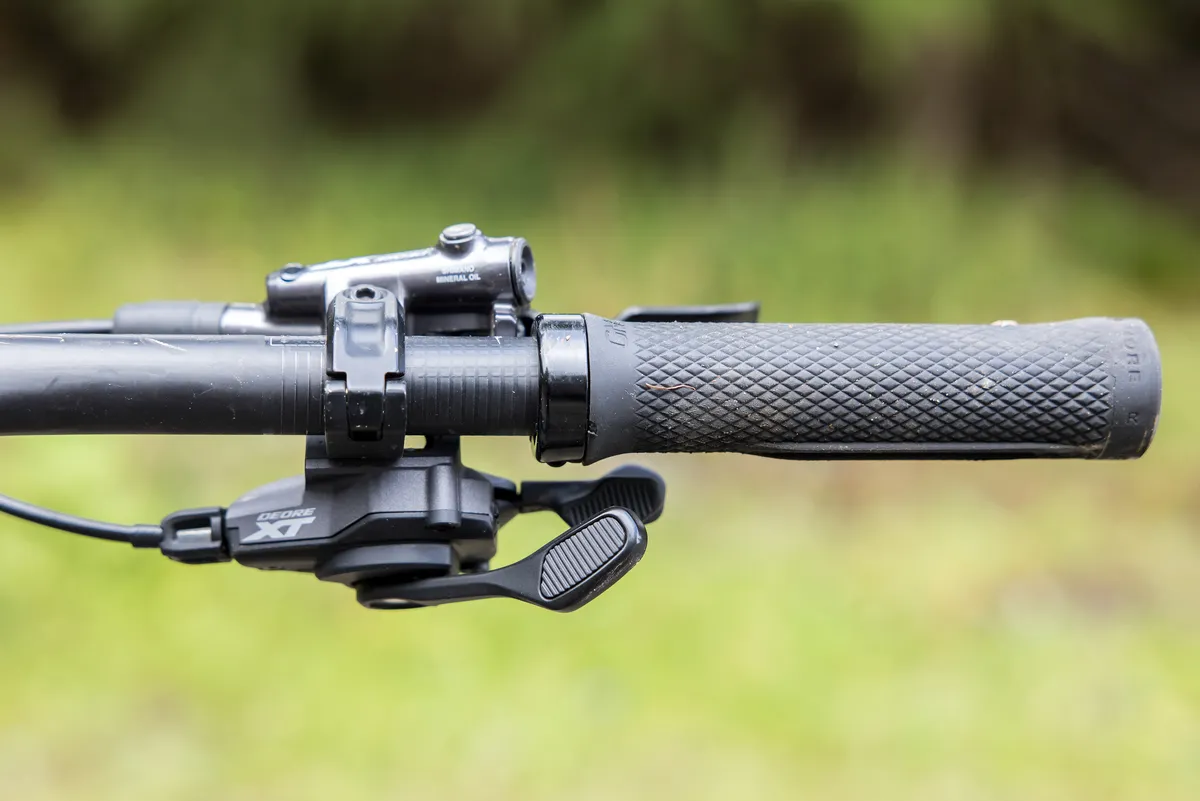
A host of components from OneUp, including the bar, stem and dropper, are fitted. There’s a Shimano XT 12-speed drivetrain and four-pot XT brakes.
All-in, this size-large Highlander II without pedals weighs 15.40kg.
Deviate Highlander II ride impressions

I tested the Highlander II on my home trails in Scotland’s Tweed Valley. Although not quite as rugged as the bike's namesake landscape up in the Highlands, the Scottish Lowlands are diverse and full of trails.
From taking in the rolling but rocky landscape of the Southern Upland Way, through to the loops of the Glentress centre, and multiple laps of gravity-fuelled runs at the Golfie enduro hotspot, I got a comprehensive feel for how the Highlander II rides.
Setup

Setting up the Öhlins suspension took some time, given I’m less familiar with it compared to Fox or RockShox. Deviate doesn’t have a setup guide and the Highlander II isn’t currently in Öhlins’ database.
The fork required lower pressures in the main air spring than I was expecting. For my 76-77kg kitted-up weight, I settled on 85psi in the main spring chamber and 250psi in the ramp-up chamber. I added +2 clicks from fully open of low-speed compression damping, but left the high-speed compression and rebound adjusters fully open.
This made it feel supple, while providing plenty of ramp-up and mid-stroke support. When set with harder spring pressures, they felt harsh on smaller bumps.
This is something I also felt on the RXF38 m.2 fork I reviewed; a problem associated with the factory-installed negative spring volume reducer spacer decreasing the size of the chamber too much.

At the shock, I settled on 195psi with +6 clicks from fully open of low-speed compression damping. I left the rebound and high-speed compression adjusters fully open.
The Highlander II initially felt harsh and rough, regardless of speed or trail type. Knowing there was more performance to find, I jostled with suspension pressures and bar heights, then later turned my attention to other components.
Eliminating each bit one by one, the offending culprits were the Vittoria Mazza Trail tyres. Compounded by needing hard pressures to stop punctures and carcass deformation in high-load situations, they also felt rigid and unforgiving over smaller bumps.
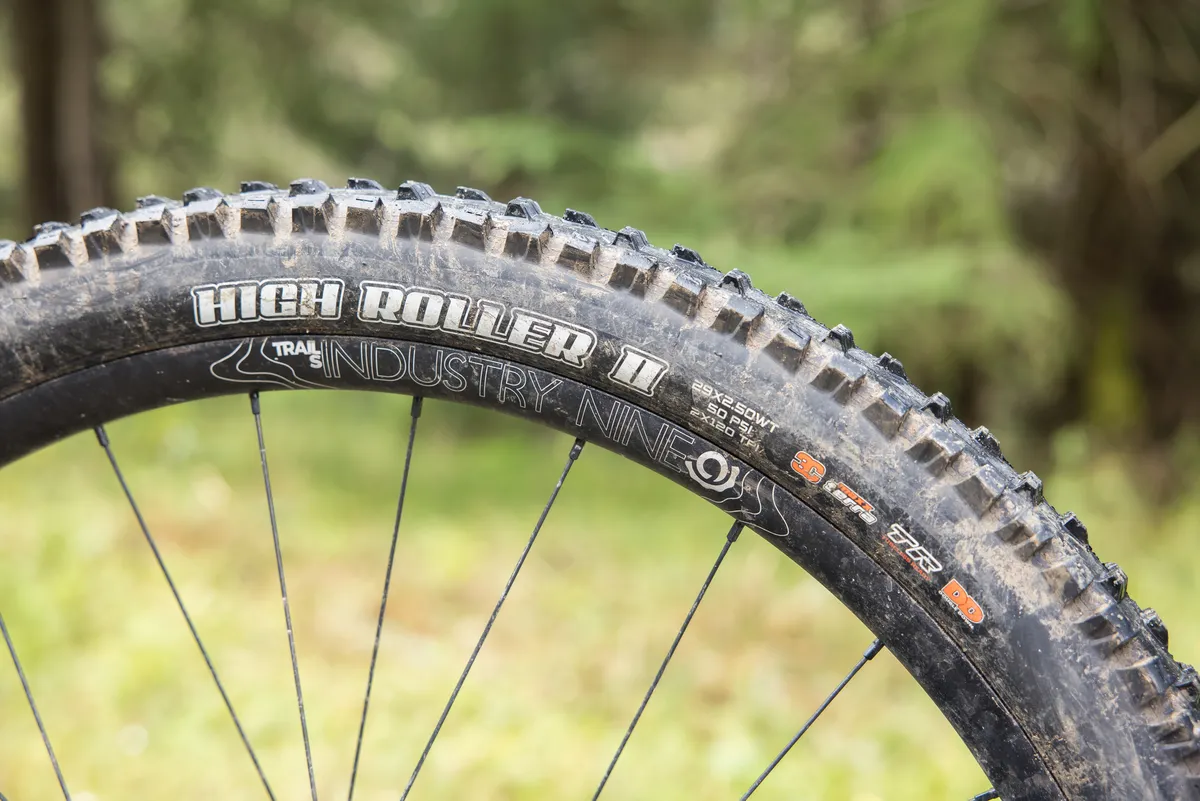
Once I’d replaced both front and rear Vittorias with Maxxis’ DoubleDown casing tyres (Assegai MaxxGrip front, High Roller II MaxxTerra rear), the ride became as soft and muted as I was expecting.
Deviate Highlander II climbing performance

Impressively, the rear suspension remains taut and solid under power.
At higher cadences or over billiard-table smooth ground, only a small amount of bob creeps in, but it’s nothing the shock’s climb lever can’t mitigate against.
Leaving the damper open on rough inclines feels best, however; the rear end is free to soak up the trail’s ripples without being choked.
On flatter, pedal-intensive slogs, littered with bumps, rocks, roots and chatter, high-pivot designs truly shine, especially one that’s as efficient as the Highlander II’s.
Although the 145mm of travel has limitations compared to a traditional suspension design, it’s possible to dive feet-first into technical terrain.

The rear end works hard to not only isolate its rider, creating comfort, but also provide grip and maintain speed where it would usually be lost.
You can feel the rear wheel moving up and out of the way of bumps, helping the bike maintain speed and composure, particularly on square-edged rocks, roots or small steps.
However, its geometry creates a slightly bipolar ride feel; a Jekyll and Hyde lite, if you will.
Seated, the average stack height and lengthy top tube (635mm) combine to encourage an aggressive, trail-focused shoulders-to-bars position.
This is great for digging deep and hammering through the pedals, but is less relaxing than the more upright position winch-and-plummet bikes have.

The steep seat tube angle claws back some of that intensity – your hips are directly above the bottom bracket, encouraging efficient pedal strokes.
While adding to the Highlander’s efficient drive, the ride position doubles down on the do-it-all feel; it’s a true jack of all trades, bridging the gap between enduro and trail proficiently, but not excelling at either.
Thanks to the suspension’s kinematics, air spring and compression damping, it sits relatively high in its travel, even on steep inclines. This preserves the geometry, reducing the number of energy-sapping weight shifts required to keep it on line and grip feeding into the rear tyre.
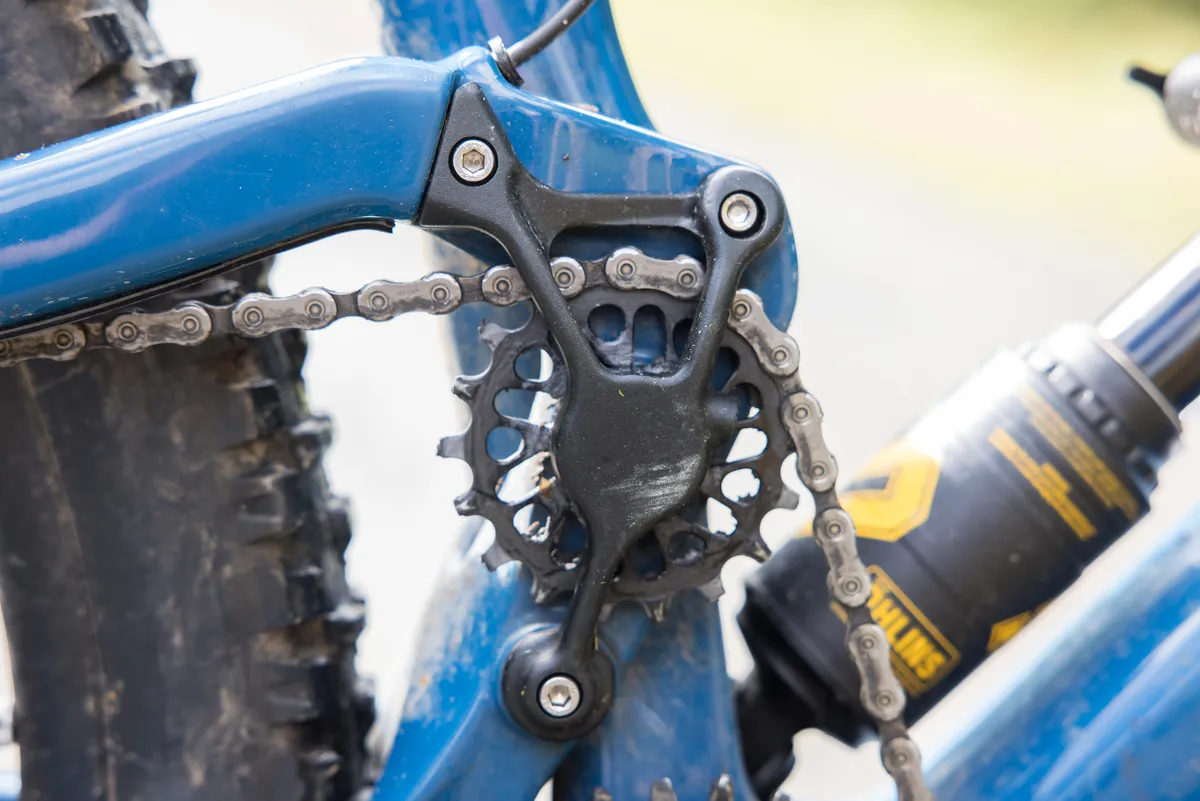
Debunking the myth that idler wheels add friction is tricky to do without scientific equipment and controlled experiences.
Anecdotally, if left dirty and run without lube, the idler wheel becomes noisier to pedal but the cranks still spin as freely as an equivalent non-idler bike in a similar state.
When you stay abreast of maintenance and cleaning, it’s extremely difficult, if not impossible, to discern a difference between the Deviate’s idler design and a regular drivetrain.
Deviate Highlander II descending performance
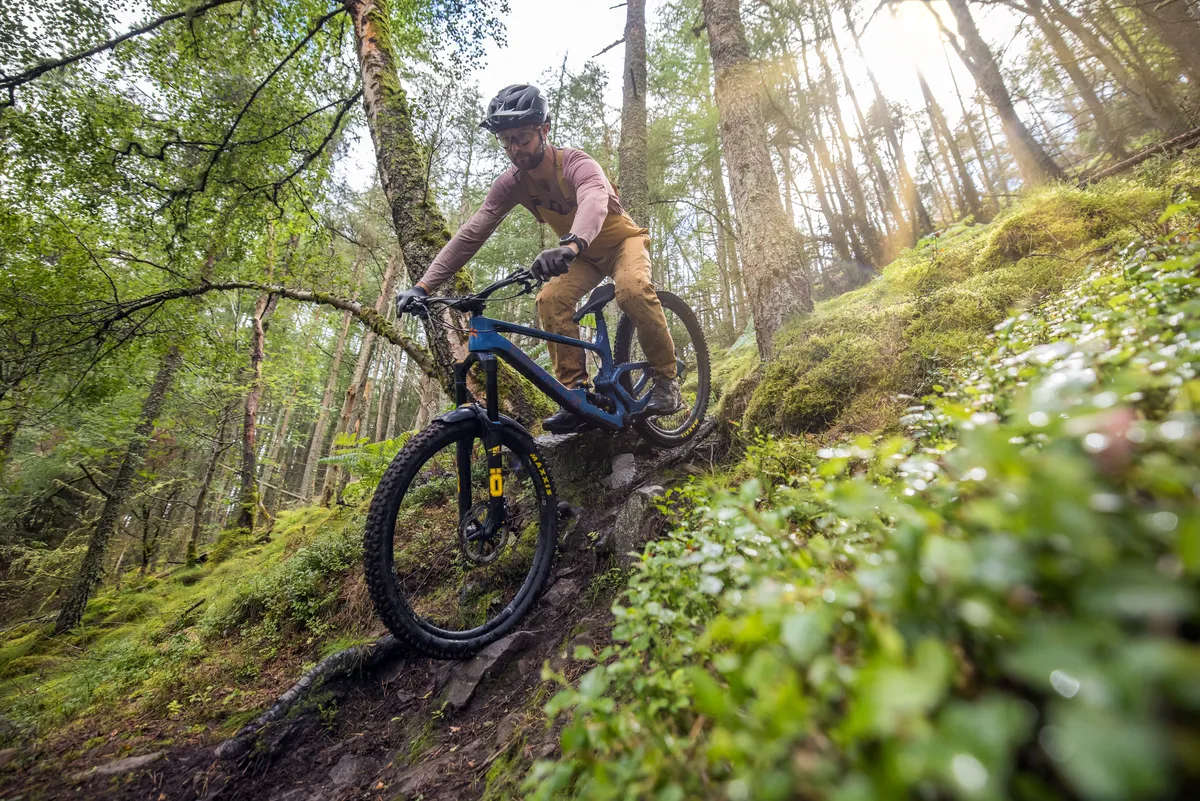
Despite the relatively diminutive (on paper) 145mm travel figure, hitting gnarly, fast and wild trails isn’t a hair-raising or fraught affair.
The Highlander II dishes out control in spades; the rear suspension’s axle path and leverage rate combine with the Öhlins damper’s impressive performance to deliver a calm and relaxed ride.
Hammer clumsily into a maze of matted, smaller-sized sharp-edged roots or rocks and the bike converts arm-pump inducing, foot-bucking bumps into duller, more muted inputs.
The scope of the rear wheel’s ability to isolate the chassis from bumps is wide, feeling akin to the smooth and stable body of a Citroën 2CV heading over a ploughed field.

By keeping the chassis level, the Highlander II is stable and controlled – glassy, even – on rough terrain. This helps you concentrate on riding faster or having more fun.
Dip into its mid-stroke and the shock’s damping circuits take over, offering plenty of well-measured and easy-to-predict support. This helps preserve the bike’s geometry in high-load situations.
Bottom-out resistance is good too. The leverage rate mirrors the air spring’s inherent progression, guiding the bike into soft full-travel landings rather than clanging into the bump stop.
It’s the same story at the front. While the fork feels soft in the car park, out on the trail the impressive damping and smooth ramp-up prevent it using too much travel when it shouldn’t.
By maintaining bar height on steeper trails, it makes it easier to control.

The only fly in the ointment here is the head angle.
While the fork and shock have plenty of gusto, and the overall length of the Deviate gives stability, once you really push through the bars to drive grip or control on super-steep sections, the front end can be prone to tucking.
A heavier hand is needed to keep the front tracking true; control can be whisked quickly away from your grasp if you relax prematurely.
Increase speeds from fast to breakneck and the front end tends to go light, outclassed by the rear’s performance.
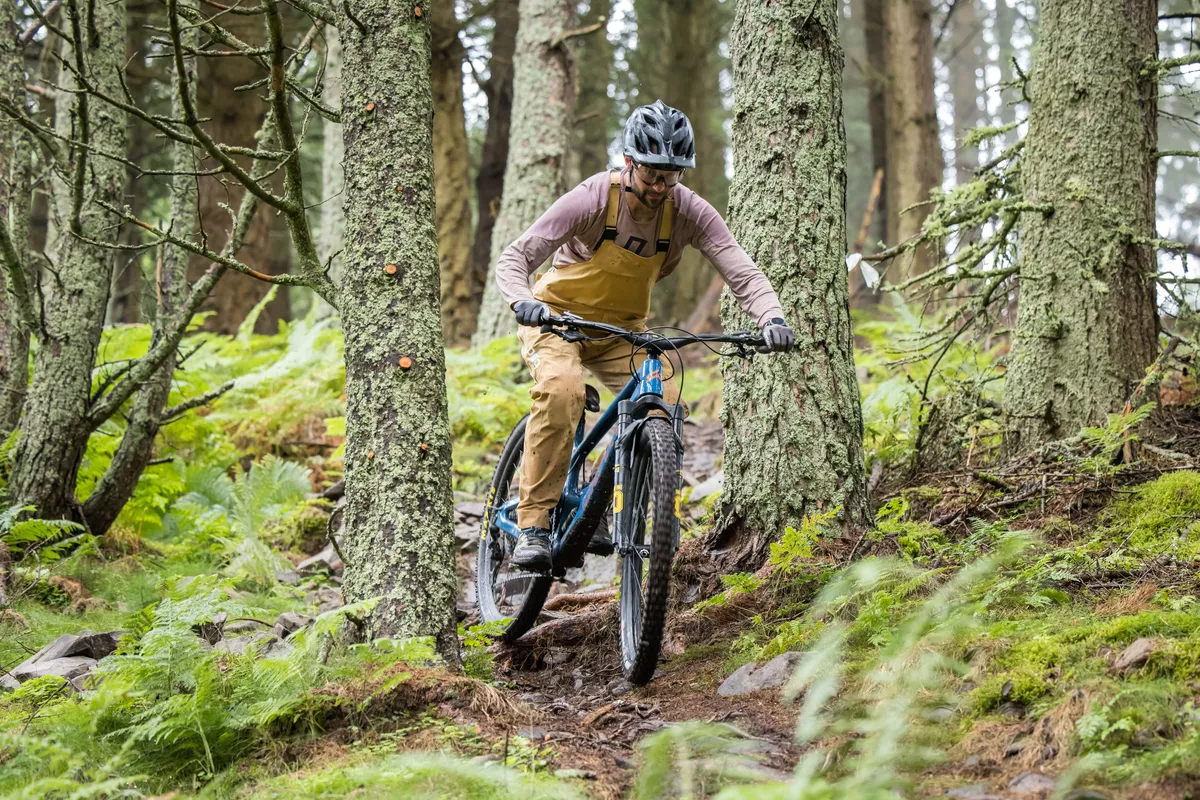
Herein lies the problem. The Deviate feels closer to a 160mm-travel bike, and this gives you the scope to push harder on gnarlier trails.
Given the performance potential, a few geometry tweaks would only make sense for trail and descent-focused riders alike.
Slackening the head angle wouldn’t compromise any other areas of the ride, especially if the rest of the figures remained the same or very similar.
That said, I’m sure Deviate would argue slackening out the Highlander II would tread on its Claymore enduro bike’s toes, but in my eyes, it would only improve the Highlander’s all-round trail performance.
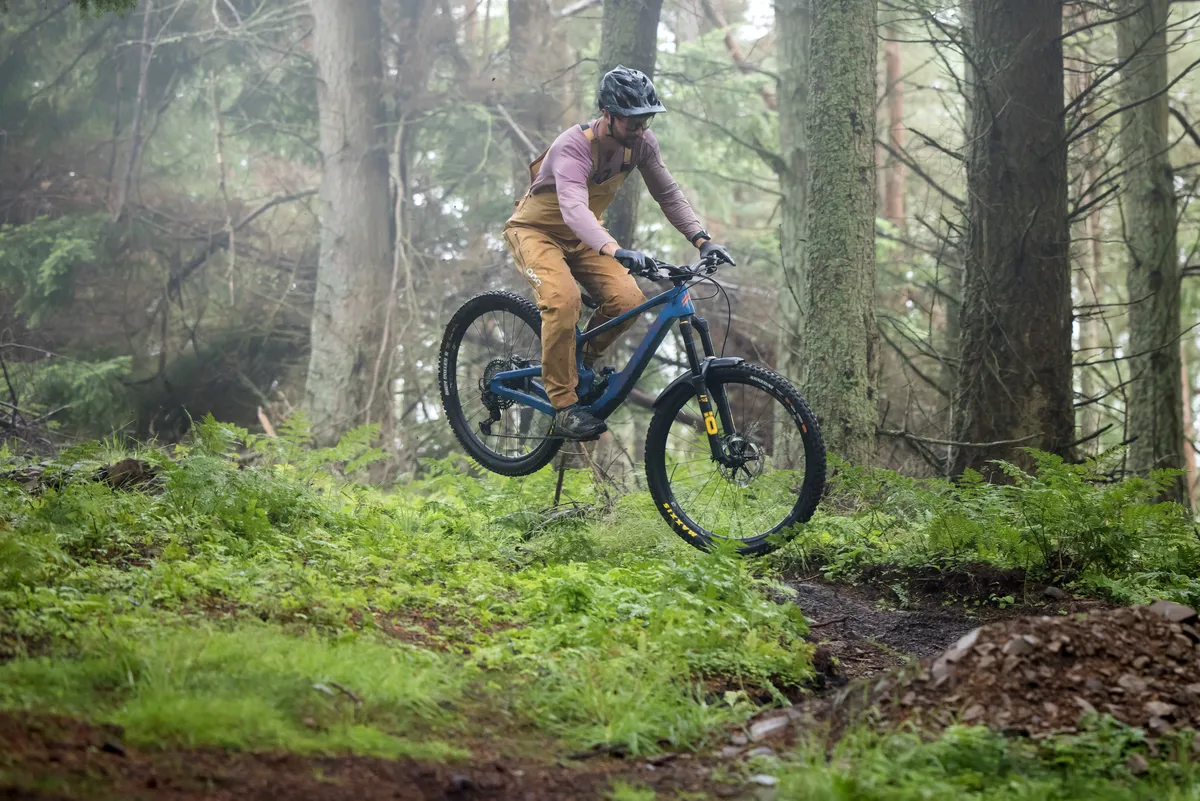
However, it’s not all doom and gloom.
The standing hand-to-feet relationship feels neutral and intuitive. As long as your speedo doesn’t dip into the red, no excessive weight shifts are needed to keep it tracking on line, and your weight evenly between the wheels.
How does the Deviate Highlander II compare to the Forbidden Druid V2?
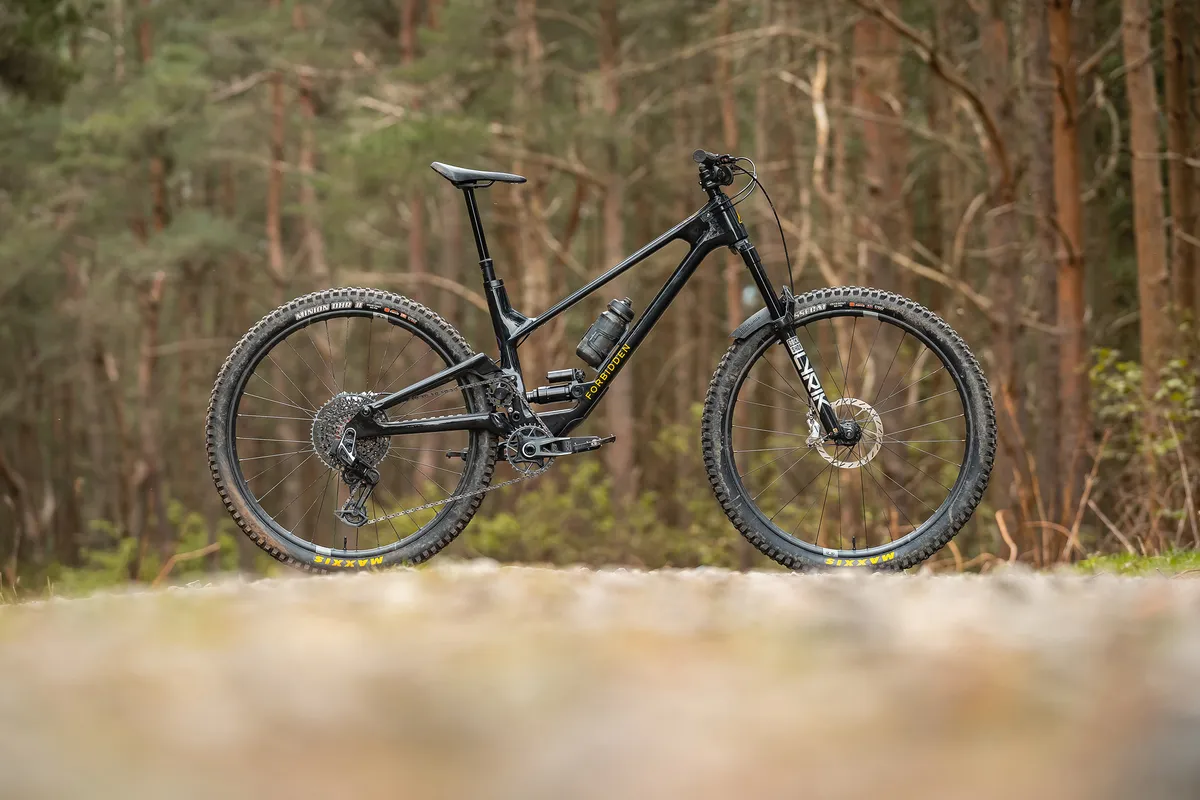
While longer-travel high-pivot bikes aren’t common, shorter-travel ones such as the Deviate Highlander II are even rarer.
Although few and far between, the obvious competitor to the Highlander II is the Fobridden Druid V2.
This only sports 130mm travel at the rear and 150mm at the front.
Although the high-pivot concept is the same, suspension designs differ between the two. The Druid gets an ‘inverted’ Horst-link, creating a floating pivot point compared to the Highlander II’s fixed single pivot.
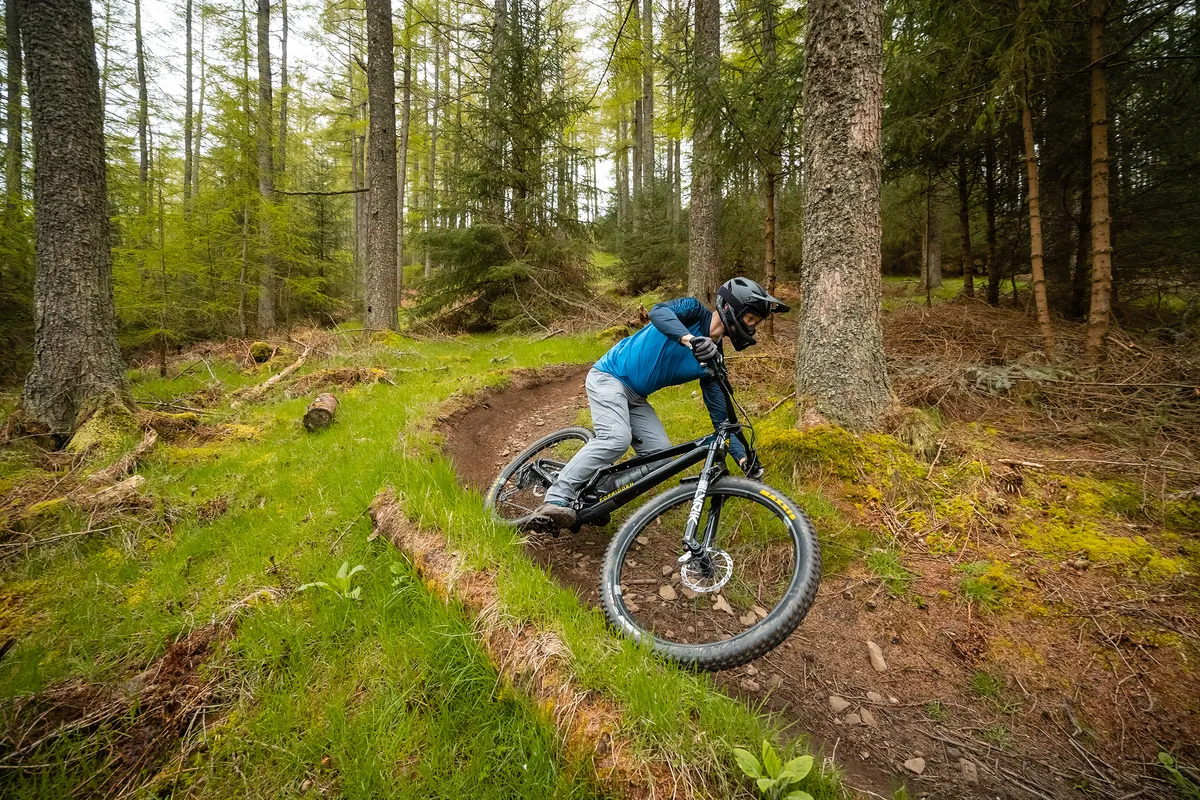
On the trail, both share an unwavering pedalling platform, where suspension bob is almost non-existent.
Their seated climbing positions are similar, too, each sharing a steep 77-degree seat tube angle and 630mm-ish stack heights.
On the downs, the Highlander II’s bigger travel figure is noticeable, making lighter work of bumps compared to the Druid.
Both share a 65-degree head tube angle, but the Forbidden’s is maybe more befitting of its performance potential compared to the Deviate.
Deviate Highlander II bottom line

It can be a bit of a cliché, but the term 'quiver killer' would be an apt way to describe the Highlander II.
It feels great on almost all types of terrain and potentially negates the need to own more than one mountain bike.
Heading out for an epic trail ride? Its super-smooth suspension will help reduce fatigue and improve comfort, helping you go for longer.
Going to ride all-mountain terrain? It has your back; there’s loads of composure and grip from the suspension for technical descents, but it’s super-efficient climbing back to the top of the highest mountains.
Do you feel like taking on some gravity-focused riding? Sure, there’s plenty in the tank to handle most downhills, but remember to back off the gas when the going gets really tough.
Product
| Brand | Deviate |
| Price | £7050.00 |
| br_whatWeTested | Deviate Highlander II |
| Weight | 15.40kg |
Features
| Fork | Ohlins RXF36 m.2 |
| Stem | OneUp Stem, 42mm |
| Chain | Shimano XT M8100 |
| Frame | Full carbon fibre |
| Tyres | Vittoria Mazza Trail Graphene 2.0 29x2.4in (f) and Vittoria Mazza Trail Graphene 2.0 29x2.4in (r) |
| Brakes | Shimano XT M8120 |
| Cranks | Shimano XT M8100 |
| Saddle | SDG Belair III |
| Wheels | Industry Nine Classic Trail S |
| Headset | FSA |
| Shifter | Shimano XT M8100 |
| Cassette | Shimano XT M8100 |
| Seatpost | OneUp Dropper V2 |
| Grips/tape | OneUp LockOn |
| Handlebar | OneUp Carbon Bar |
| Rear shock | Ohlins TTX2 Air |
| Bottom bracket | Shimano |
| Available sizes | S, M, L, XL |
| Rear derailleur | Shimano XT M8100 |

